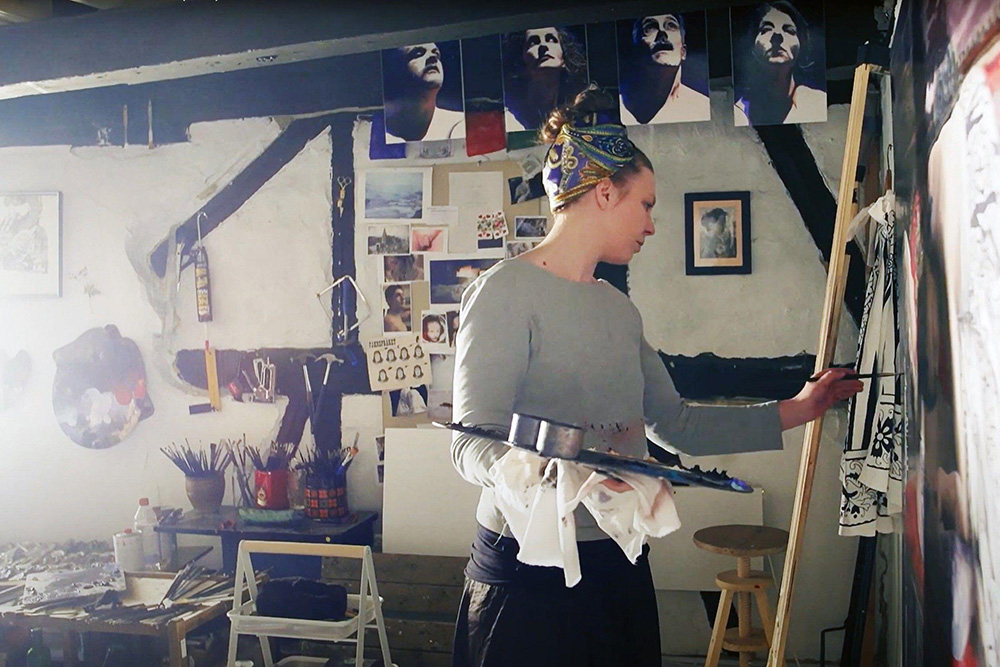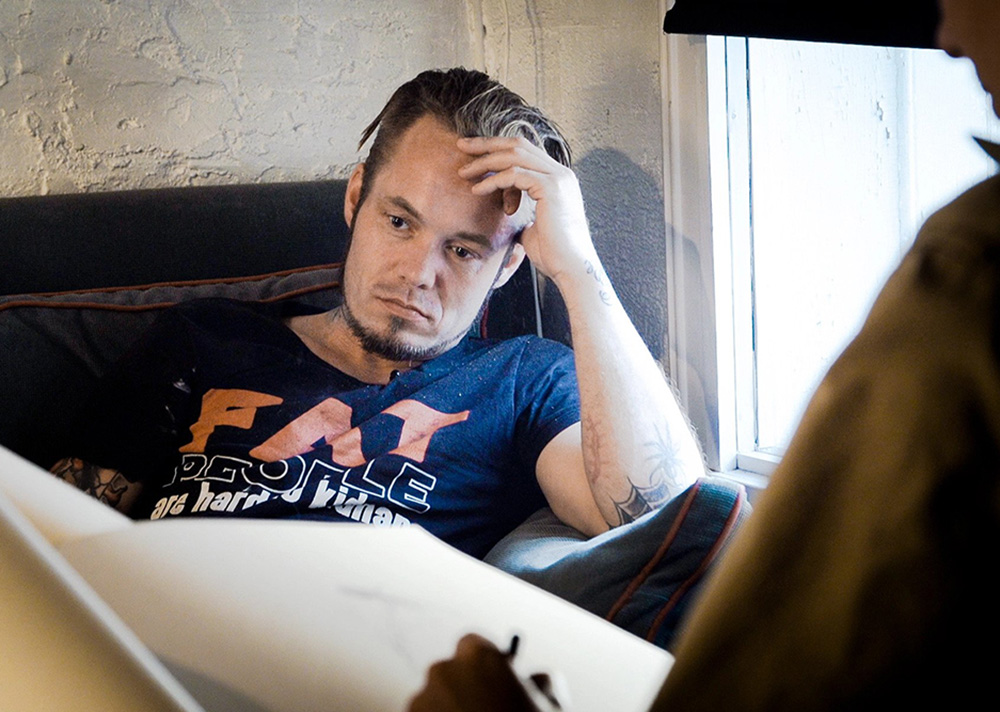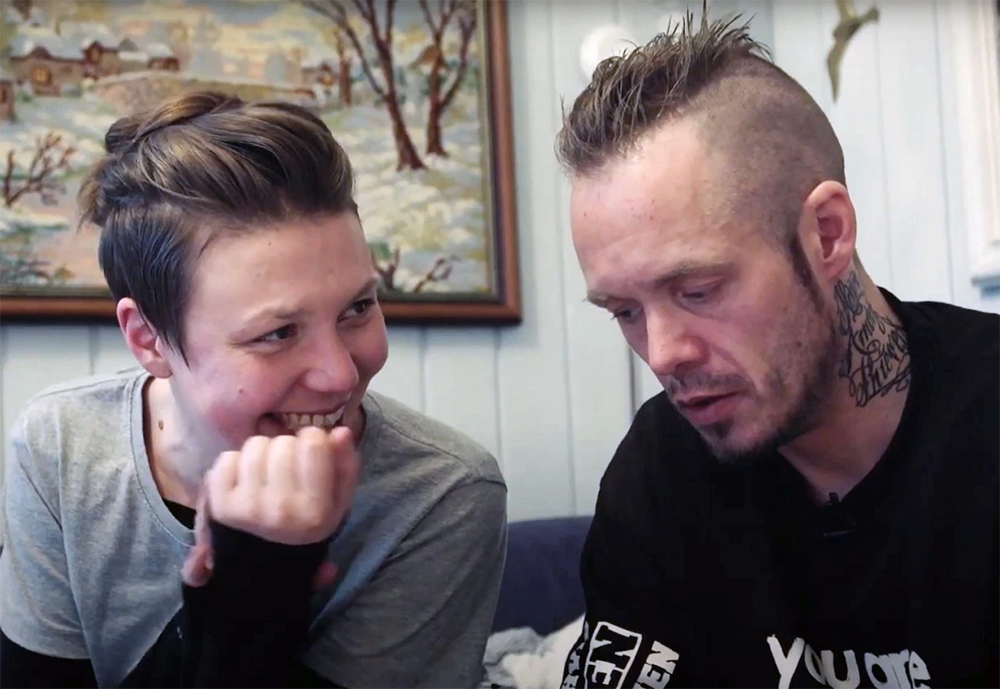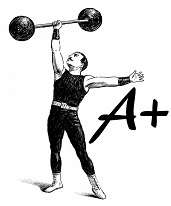If there is one documentary you watch this year, let it be “The Painter and the Thief.”
It is an affecting depiction of two real people moving through years of triumphs and challenges while subverting our ideas of acceptance and reform. The film won an award for ‘Creative Storytelling’ at the 2020 Sundance Film Festival, and distributor Neon announced this week that it is now co-developing a narrative remake of the documentary. It’s a story about a painter, Barbora Kysilkova, and the thief, Karl-Bertil Nordland, whose lives intersected and brought them both into new chapters in their lives. This is a human story that should not be retold as a narrative feature. It already exists, and it is one of the best films of this year.
We open with artist Barbora Kysilkova painting on a large canvas in a cluttered concrete studio. Brush in hand, she ties her hair back, outlines her drawing, and begins painting each line with deep concentration and intent. The painting is revealed to be a bird lying dead amongst weeds and sells for 20,000 euros at a gallery auction in Oslo, Norway. It is “The Swan Song,” and the first painting she has sold since moving to Oslo.
Later, on surveillance footage from the gallery, we see two men pry open the door leading into the gallery. When they return, they are recorded carrying two large canvases out the back door and onto the street. When we see the front gallery windows, “The Swan Song” is missing from its frame, and the thieves make the morning news in Oslo. The camera holds on to Barbora’s face as she comes to terms with the loss of her prized painting. What interests her most is that the criminals delicately separated the canvas from its frame, and extracted each nail without producing a single tear.

The trial takes place at the Oslo District Courthouse with one of the thieves, Karl-Bertil Nordland. And later, through audio, we hear Barbora approach him and ask if they can meet one time after the trial. She tells him she is the artist of the painting he stole and wants to paint a portrait of him. He agrees.
Karl-Bertil arrives at her studio with slicked-back hair, tattoos on his arms and his chest revealed; he sits on the couch smoking a cigarette with his head resting on his hand. She studies him as she sketches on her pad, telling him he will need to pose for her often. Barbora studies every contour of this man, who seems uncomfortable sitting so exposed. When he leaves she searches for Karl-Bertil on Facebook, trying to fill in the gaps in her subject’s life. She notices his changing face over the years, becoming gaunt as his drug abuse ages him dramatically. What confuses her most of all is that Karl-Bertil cannot remember anything about the day he stole the painting. It is lost and perhaps will never be found.
When she finishes her first portrait of Karl-Bertil, his eyes take in the magnitude of the life-sized painting. His jaw drops from shock into remorse, eventually weeping openly. He approaches the canvas and takes in every detail of her portrait as tears stream down his cheeks. Barbora embraces him, offering comfort to the man who stole her prized painting. This incredible moment caught on camera is at once pure and complex as his sobs dissolve into moans. There is a darkness that lives in Karl-Bertil and Barbora interprets it as his beauty.
There is no understating the power of this documentary as it is captured in real-time by director Benjamin Ree. We gain significant access to both subjects’ lives and gradually understand the pain they share may represent the comfort they need. This relationship isn’t sexual. It is but a pure connection born from a crime that was painful for both subjects in very different ways.

The story unfolds in dueling timelines, following Barbora and Karl-Bertil over a few years in their friendship. Karl-Bertil struggles to maintain sobriety and even tries to score heroin on his way to rehab. Barbora uses her own money to help Karl-Bertil when he is involved in a terrible car crash that lands him back in jail and leads to personal struggles to pay her rent. There is so much growth that these two go through throughout the film; to reveal anything more would be diminishing the talents of director Benjamin Ree and Editor Robert Stengård. They move through time fluidly while never judging either of their subjects.
Ree shows us two human beings struggling at different points in their lives and how this intersection became the convergence of a new path. Karl-Bertil’s drug abuse and criminal activity is something to overcome over time, while Barbora’s momentary success and subsequent loss of her painting lead to new inspirations. Together, they see in the other what they fail to see in themselves, and Ree holds the camera as a curious spectator, allowing us a glimpse into this unique story.
At its core, this documentary demonstrates that the person we want to be is often the person that we struggle to see. Sometimes it takes someone unexpected to draw that inner-voice out without judgment or impatience. We can be at our lowest and still build a life that brings us joy. It just takes time to feel our way through life and find the path that fulfills our needs and expectations. Our experiences determine our growth, and both Barbora and Karl-Bertil influence each other most beautifully. That it takes an artist and her brush to bring this change in a criminal who may not survive his addiction, makes this film a special experience.
*”The Painter and the Thief” is now available to stream now on Hulu and most other streaming platforms.


